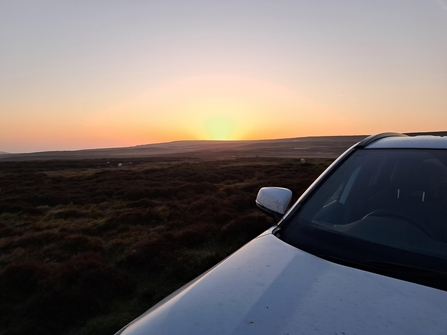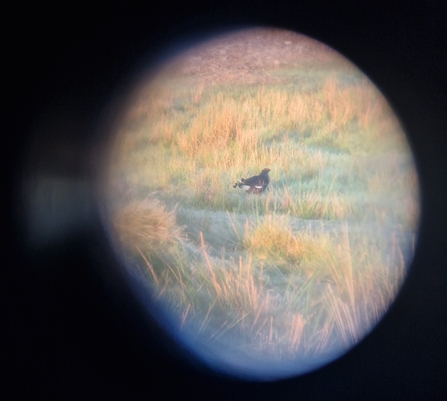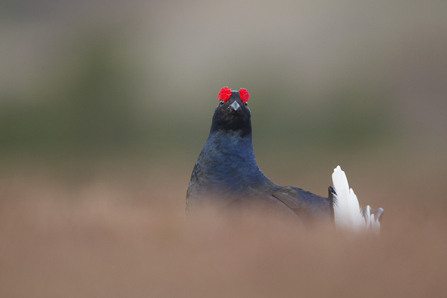These charismatic birds once danced across the moors of the Peak District but today are missing from our uplands. In this story of restoration, reintroduction and determination, Dave Savage, our Landscape Recovery Manager, shares how a dawn trip to a Welsh moor, a bacon cob, and the wisdom of “Gordon Grouse” have inspired a bold new chapter in Derbyshire’s nature recovery journey.
One of the amazing things about working for Derbyshire Wildlife Trust, and one of the reasons I’ve stayed for nearly 20 years, is the relentless energy and optimism of our team. Even in the face of decades of wildlife loss across Derbyshire, there’s a shared determination to try new approaches and never give up on nature.
That spirit recently took me and three colleagues to a moor in Wales at 5am on a crisp May morning. Our goal? To see a black grouse in the wild, a species lost from Derbyshire’s uplands and one we’re determined to bring back. Armed with a map dotted with cryptic coordinates and the encouragement of a man whose email address began “gordongrouse@…”, we set off in hope, with a name like that he must know his stuff!




